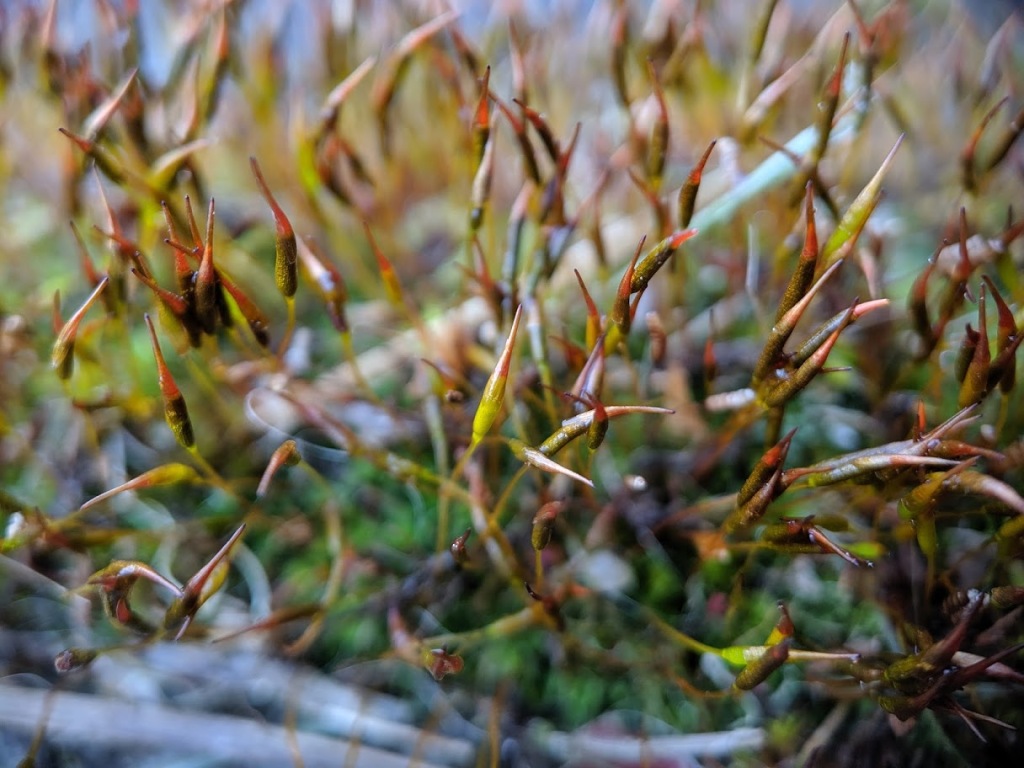Tortula muralis
Hedw.Autoicous or dioicous. Plants 2–8 mm tall in dense turves on walls, spaces between cement paths or rarely on soil or rock. Asexual propagules absent. Stems 0.5–5 mm long, simple or branched. Leaves patent or spreading when moist, spirally twisted around stem or rarely incurved when dry, ligulate, (1.1–) 1.6–2.4 (–3) mm long, 0.4–0.6 mm wide, slightly concave, unistratose, sometimes bistratose at margins; apex rounded to obtuse; costa excurrent as a smooth hyaline or sometimes yellowish or brownish hairpoint or rarely mucro; margins crenulate near base or in apical half, narrowly recurved or revolute to near apex, with 4–7 rows of differentiated cells forming a distinct border; laminal cells in apical half quadrate-hexagonal to rectangular, (7.5–) 12.5–17.5 (–20) μm long, (7.5–) 10–12.5 (–17.5) μm wide, pluripapillose; laminal cells near base rectangular, (20–) 30–54 (–80) μm long, (10–) 20–22.5 (–25) μm wide, smooth. Seta 6–16 mm long, reddish-brown to yellowish brown, smooth. Capsules erect, cylindric, straight, 1.5–3 mm long. Operculum conic, 0.9–1.2 mm long. Peristome of 32 spirally twisted teeth.
MuM, Wim, GleP, VVP, VRiv, GipP, WaP, Gold, CVU, GGr, DunT, NIS, WPro, HSF, HNF, OtR. In town centres, cities and around buildings throughout the state, occasionally also in rocky natural environments like escarpments and cave entrances. Also WA, SA, NSW, ACT and Tas. Cosmopolitan.
 Spinning
Spinning
